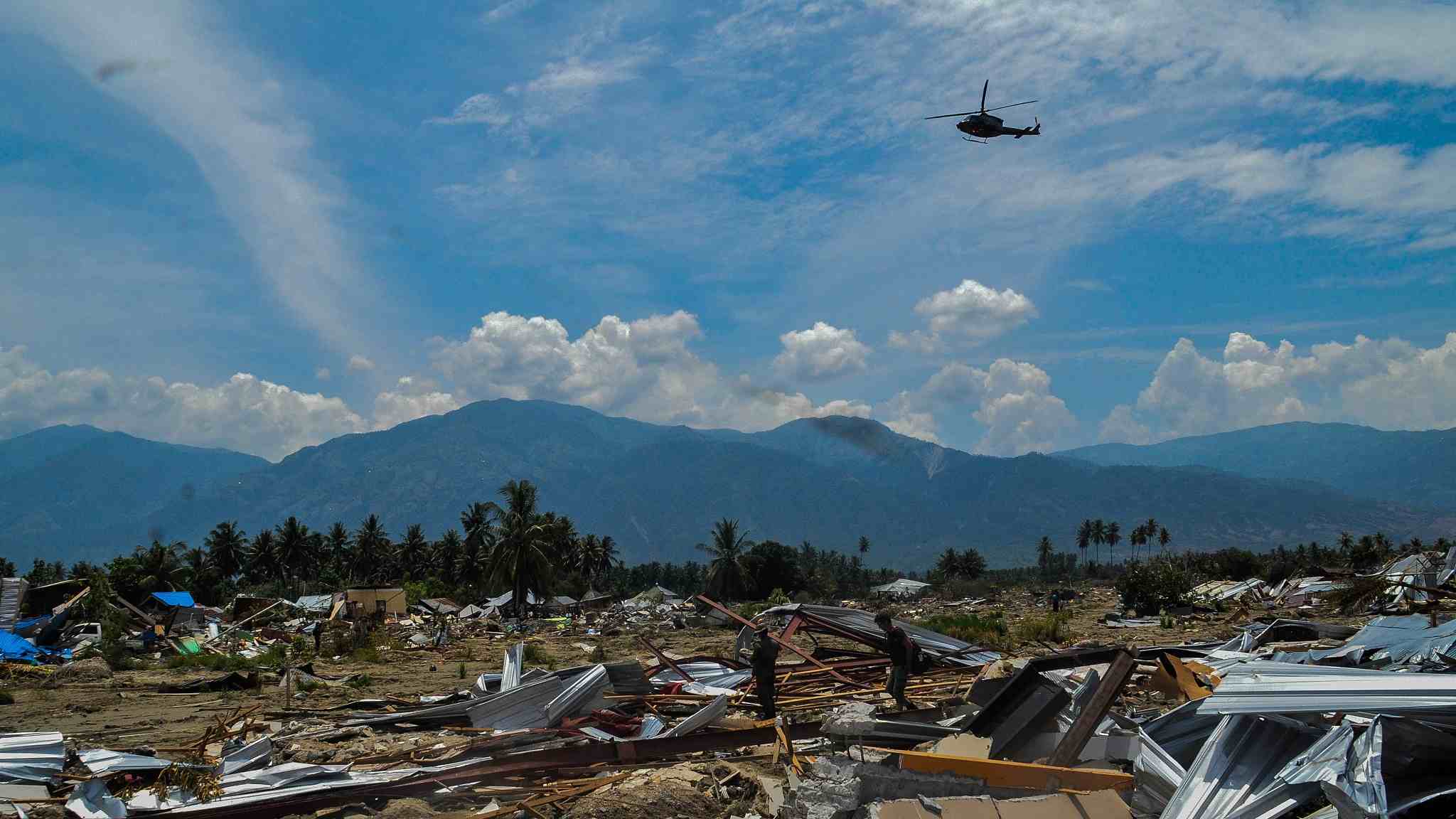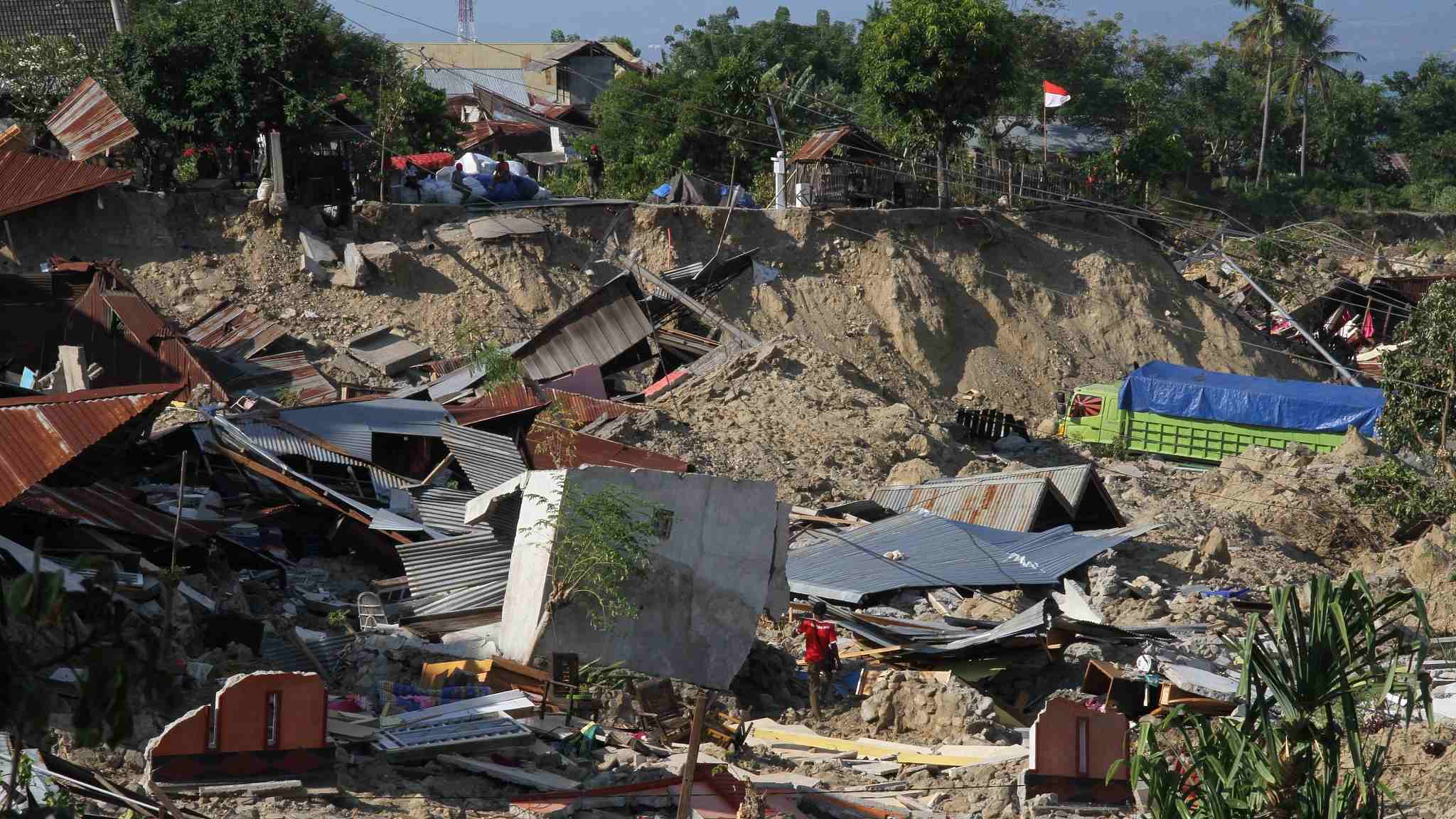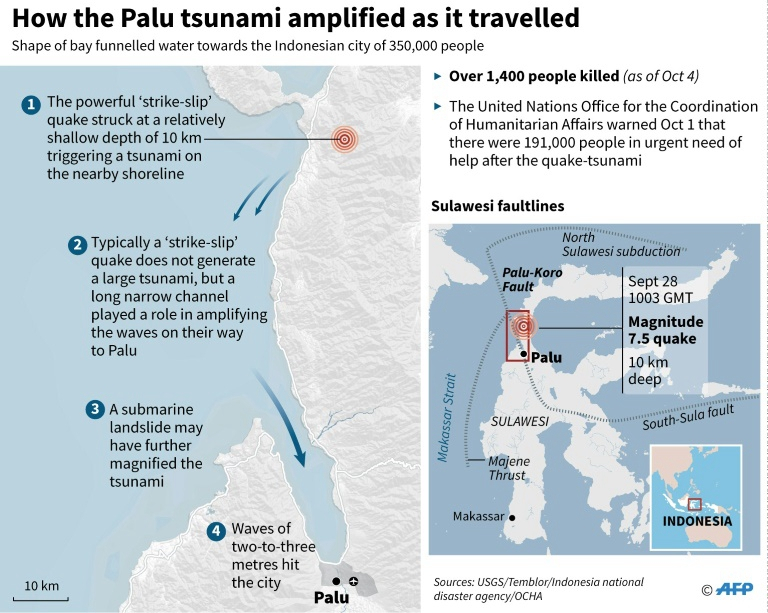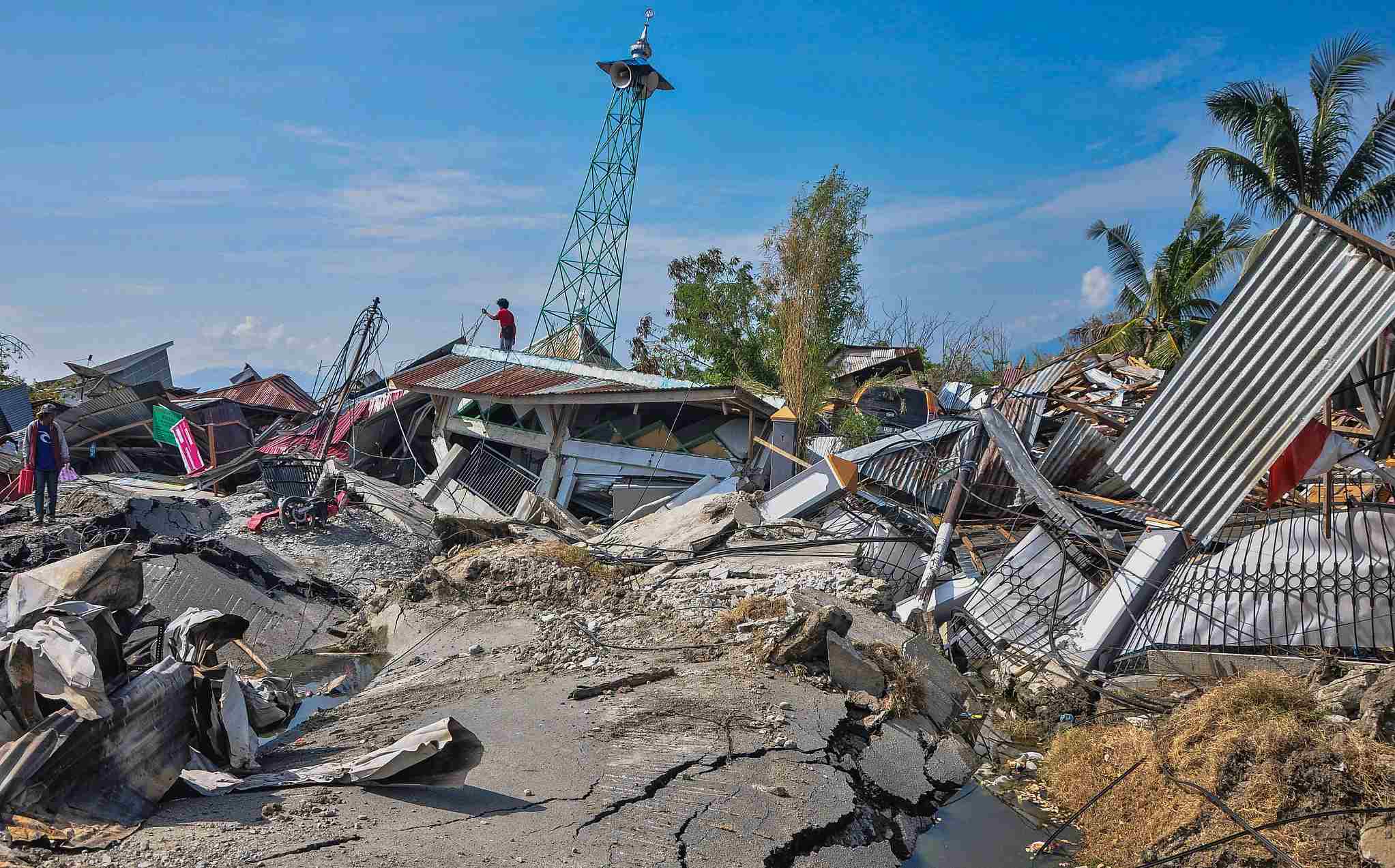
Science
19:46, 05-Oct-2018
Scientists zero in on cause of unusual Indonesian disaster
Updated
19:41, 08-Oct-2018
CGTN

Almost a week after a quake-tsunami wreaked devastation in central Indonesia, scientists are zeroing in on what they believe caused the highly unusual natural disaster.
The 7.5-magnitude earthquake hit off Sulawesi island Friday and sent destructive waves charging into the coast, reducing buildings in Palu to rubble and sweeping people to their deaths.
The city was not regarded as being at high-risk of a tsunami and was left grossly unprepared for the catastrophe, which has so far claimed more than 1,400 lives with hundreds more injured and missing.
Now experts are piecing together the unlikely chain of events which laid waste to Palu.
The quake was a sideways – rather than vertical – movement of tectonic plates, seen as unlikely to generate a tsunami.

Damaged buildings are seen as evacuation of victims of the earthquake and tsunami by a joint team from Indonesia's National Search and Rescue Agency (BASARNAS) still continues in the village of Balaroa village of Palu, Central Sulawesi, Indonesia, October 4, 2018. /VCG Photo
Damaged buildings are seen as evacuation of victims of the earthquake and tsunami by a joint team from Indonesia's National Search and Rescue Agency (BASARNAS) still continues in the village of Balaroa village of Palu, Central Sulawesi, Indonesia, October 4, 2018. /VCG Photo
But after sifting through mounds of data, scientists believe that the powerful tremor occurred over the vast length of a fault line, triggering underwater landslides that caused the tidal waves.
"This is an earthquake that is not the standard mechanism to generate a tsunami," Costas Synolakis, director of the University of Southern California's Tsunami Research Center, said.
'It's fairly rare'
When the monster waves did roll in, their force was intensified as they rushed down a narrow bay into Palu.
In recent years Sumatra has been the main focus of authorities' concern when it comes to tsunamis as Aceh, on the island's northern tip, was devastated by a deadly quake-triggered tsunami in 2004.
Officials fear another major quake and tsunami are inevitable at some point on the highly volatile fault line off the island's west coast, meaning there was greater vigilance towards the threat than in Sulawesi.
Apart from a handful of tsunami experts, few seemed worried that the fault line that cut through Palu would produce a tsunami, particularly as it is what is known as a "strike-slip" fault, where tectonic plates move sideways.

How the Palu tsunami amplified as it traveled /AFP Photo
How the Palu tsunami amplified as it traveled /AFP Photo
In the Aceh tsunami and the majority of others, destructive waves were generated by a violent upward thrust of the Earth's crust, not a sideways movement.
But such was the force of the quake off Sulawesi and the aftershocks that followed, one or more underwater landslides are believed to have occurred that displaced huge quantities of water and sent waves barreling into the coast.
'Have to learn from this'
"There is reasonable confidence that this tsunami was triggered at least partially by a landslide," said Adam Switzer, a tsunami expert from Nanyang Technological University's Earth Observatory of Singapore.
"It's very unlikely the earthquake alone could generate a tsunami of that size."
Even before the tsunami hit, the quake and the aftershocks that followed caused widespread devastation along the Sulawesi coast, with many buildings left in ruins and huge cracks ripped in roads.

A mosque is seen to be severely damaged and houses destroyed by earthquake and tsunami in Palu, Central Sulawesi Province, Indonesia, October 4, 2018. /VCG Photo
A mosque is seen to be severely damaged and houses destroyed by earthquake and tsunami in Palu, Central Sulawesi Province, Indonesia, October 4, 2018. /VCG Photo
But with officials not expecting such a catastrophic event in the area, Palu seemed ill-prepared.
A tsunami alert was issued at the national level when the quake hit but was lifted soon afterwards and it is not clear if there was an effective mechanism to relay the warning to people on the ground in Sulawesi.
And the city's tide-monitoring station, which could have detected the destructive waves, was broken on the day, authorities have admitted.
But while many in Indonesia were surprised that the disaster hit Palu, scientists say there are other examples of such quakes.
Of about 35 tsunamis documented since 1992, four are believed to have been caused by quake-triggered undersea landslides, but none were in Indonesia, according to Professor Synolakis.
Despite the criticism that authorities were unprepared, seismologists have been more forgiving – they say the chain of events was so complicated it would have been hard for even advanced warning systems to detect the tsunami.
"This is something the automated systems could not really anticipate," Synolakis said.
The tsunami expert Switzer said he and his colleagues were working flat out to figure out exactly what happened, and it would likely be a long process.
"We really need to make sure that we understand this event, because we have to learn from this," he said.
(Top image: Condition of an area affected by earthquake and tsunami in Jono Oge village, Sigi, Central Sulawesi, Indonesia, October 4, 2018 /VCG Photo)
Source(s): AFP

SITEMAP
Copyright © 2018 CGTN. Beijing ICP prepared NO.16065310-3
Copyright © 2018 CGTN. Beijing ICP prepared NO.16065310-3